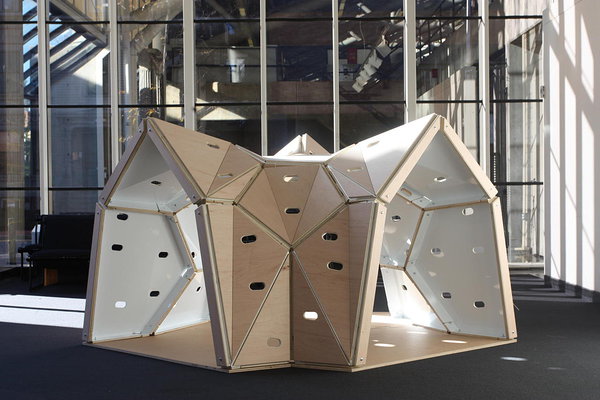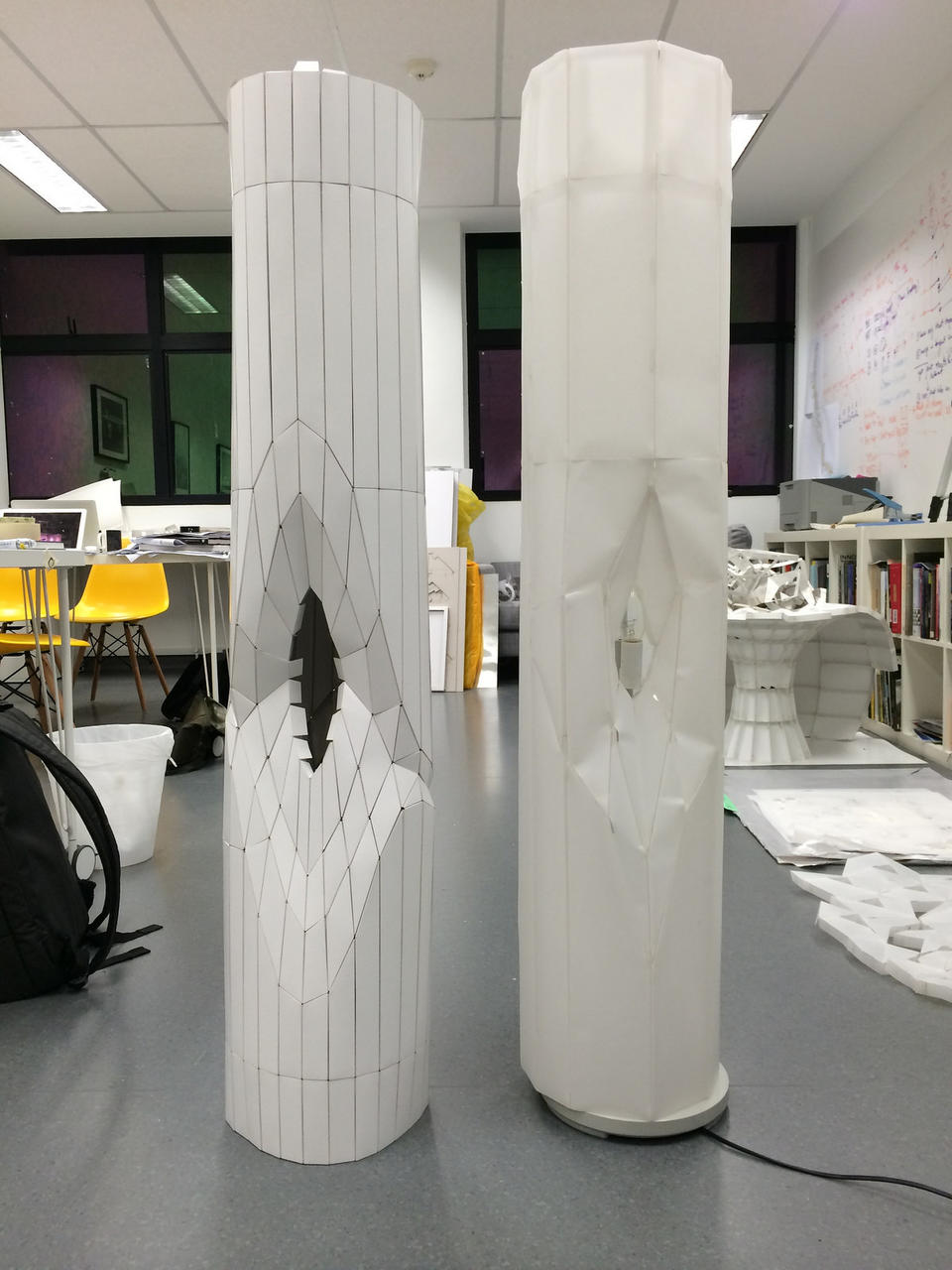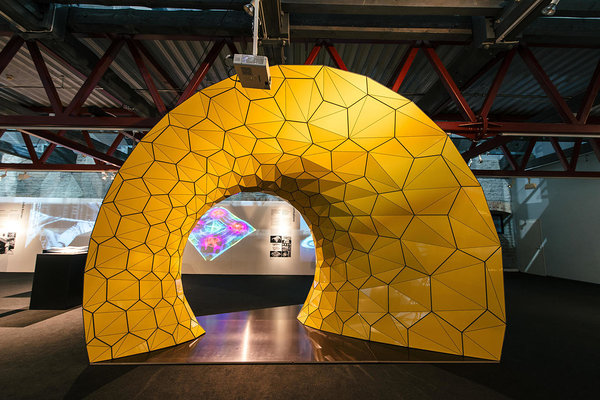Grid Structures
Architectural design of complex structures has made a quantum leap in the last two decades. Computer aided design and analysis tools have expanded the horizons of architectural form, similar to the way in which descriptive geometry expanded the possibilities of masonry during the Enlightenment. But construction technology that enables the fabrication and assembly of new architectural geometries has not kept pace. Complex forms of most contemporary buildings rely on relatively traditional column-beam support systems, infill and cladding. More advanced structural solutions require complex fabrication, such as three-dimensional CNC milling and highly skilled assembly labor on site – requirements that are well beyond reach for most architectural projects.
The City Form Lab’s research on grid structures has developed a novel building technology solution, which enables prefabricated double-curvature structures to be built with non-specialized labor at a very low cost. This is made possible by using standardized flat-sheet materials, limiting all fabrication to only two-dimensional cutting and relying on structural folding to achieve desired geometric forms. Constraining all structural elements to strictly flat material sheets, using shape outlines that are cut only at a perpendicular angle, reduces fabrication costs and makes complex spatial structures available to a wider audience. A custom RhinoPython library was developed at CFL to automate the generation of double-walled flat-panel structures from a user-provided line network. The geometries of all structural elements are jointly controlled by adjusting the underlying line-network and associated material parameters. The RhinoPython library regenerates the geometric solution when the network is altered, complete with fabrication-ready unfolded panel drawings, marked with unique IDs on each element. The developed solution allows full-scale grid structures to be generated freeform curved line networks using very flexible structural patterns, ranging from triangles, quads, pentagons, hexagons or any regular or irregular n-gons.
The solution has been previously tested in four full-scale architectural / exhibition projects and a series of scale-models:
Singapore University of Technology and Design’s (SUTD) Gridshell (in collaboration with ARUP)
Re:imagining Cities exhibit at the Singapore Urban Redevelopment Authority gallery (in collaboration with the ETH Future Cities Lab)
Tallinn Architecture Biennale main exhibition structure.
Indonesia's Urban Story exhibition structure.
More information:Sevtsuk, A., Kalvo, R., 2014. "A Freeform Surface Fabrication Method with 2D Cutting". Proceedings of the Simulation for Architecture and Urban Design (SimAUD) 2014 conference, Tampa, FL. PDF
Sevtsuk, A., & Kalvo, R. (2014). Geometrical Solution Space for Grid Structures with Double-Walled Edges. In P. Block, J. Knippers, N. J. Mitra, & W. Wang (Eds.), Advances in Architectural Geometry (pp. 215–231). Springer. PDF
The City Form Lab’s research on grid structures has developed a novel building technology solution, which enables prefabricated double-curvature structures to be built with non-specialized labor at a very low cost. This is made possible by using standardized flat-sheet materials, limiting all fabrication to only two-dimensional cutting and relying on structural folding to achieve desired geometric forms. Constraining all structural elements to strictly flat material sheets, using shape outlines that are cut only at a perpendicular angle, reduces fabrication costs and makes complex spatial structures available to a wider audience. A custom RhinoPython library was developed at CFL to automate the generation of double-walled flat-panel structures from a user-provided line network. The geometries of all structural elements are jointly controlled by adjusting the underlying line-network and associated material parameters. The RhinoPython library regenerates the geometric solution when the network is altered, complete with fabrication-ready unfolded panel drawings, marked with unique IDs on each element. The developed solution allows full-scale grid structures to be generated freeform curved line networks using very flexible structural patterns, ranging from triangles, quads, pentagons, hexagons or any regular or irregular n-gons.
The solution has been previously tested in four full-scale architectural / exhibition projects and a series of scale-models:
Singapore University of Technology and Design’s (SUTD) Gridshell (in collaboration with ARUP)
Re:imagining Cities exhibit at the Singapore Urban Redevelopment Authority gallery (in collaboration with the ETH Future Cities Lab)
Tallinn Architecture Biennale main exhibition structure.
Indonesia's Urban Story exhibition structure.
More information:Sevtsuk, A., Kalvo, R., 2014. "A Freeform Surface Fabrication Method with 2D Cutting". Proceedings of the Simulation for Architecture and Urban Design (SimAUD) 2014 conference, Tampa, FL. PDF
Sevtsuk, A., & Kalvo, R. (2014). Geometrical Solution Space for Grid Structures with Double-Walled Edges. In P. Block, J. Knippers, N. J. Mitra, & W. Wang (Eds.), Advances in Architectural Geometry (pp. 215–231). Springer. PDF










